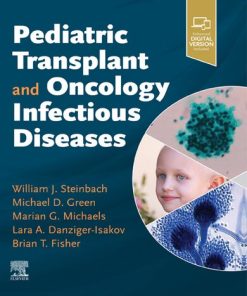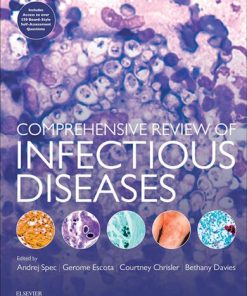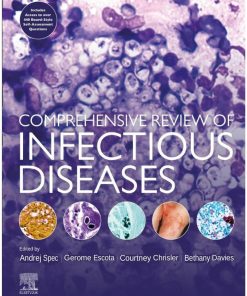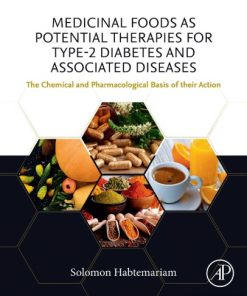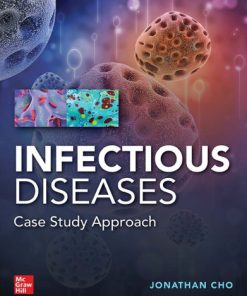(Ebook PDF) Medicinal Spices and Vegetables from Africa Therapeutic Potential against Metabolic Inflammatory Infectious and Systemic Diseases 1st edition by Victor Kuete 0128094419 9780128094419 full chapters
$50.00 Original price was: $50.00.$25.00Current price is: $25.00.
Medicinal Spices and Vegetables from Africa: Therapeutic Potential against Metabolic, Inflammatory, Infectious and Systemic Diseases 1st edition by Victor Kuete – Ebook PDF Instand Download/DeliveryISBN: 0128094419, 9780128094419
Full dowload Medicinal Spices and Vegetables from Africa: Therapeutic Potential against Metabolic, Inflammatory, Infectious and Systemic Diseases 1st edition after payment.
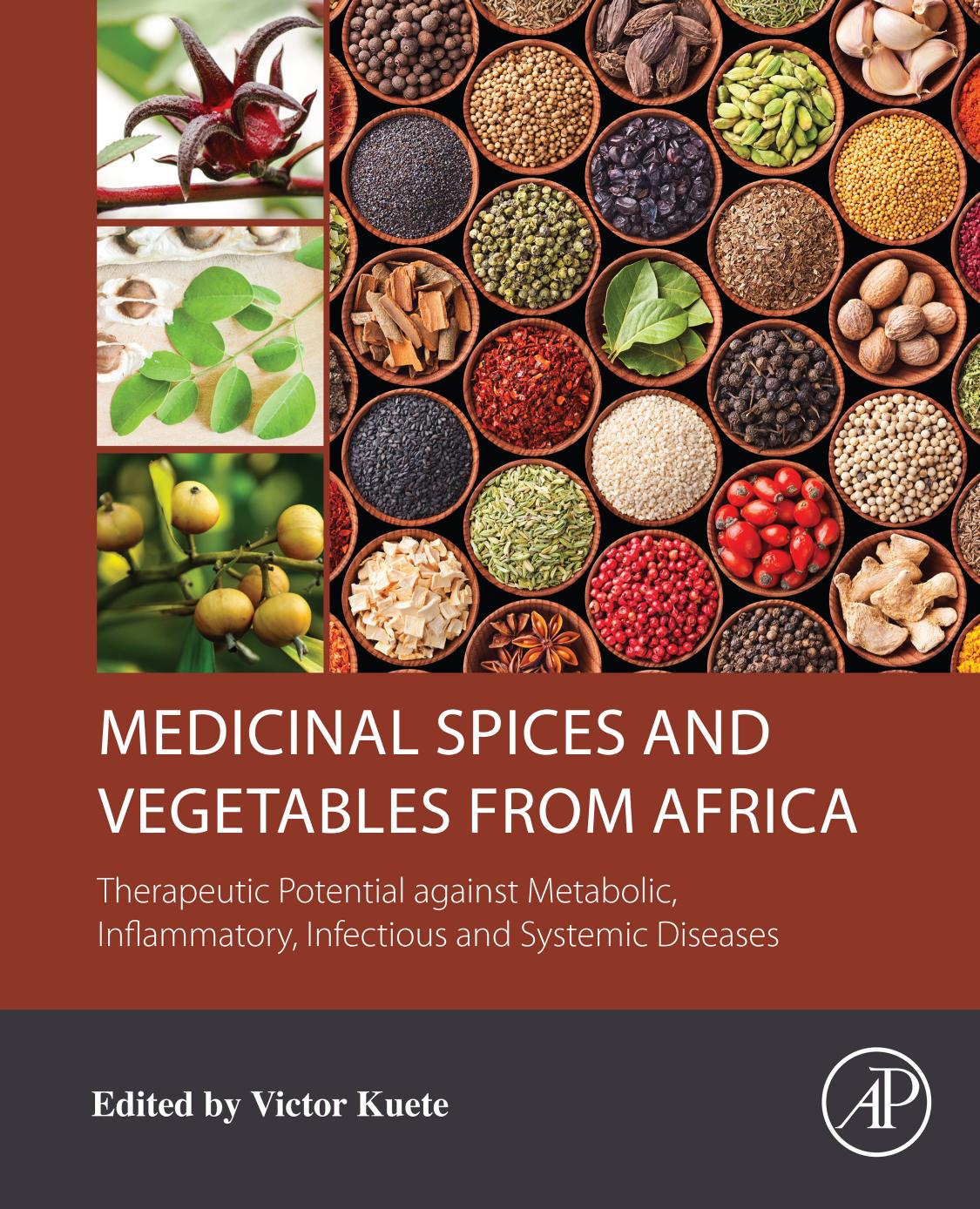
Product details:
ISBN-10 : 0128094419
ISBN-13 : 9780128094419
Author: Victor Kuete
Medicinal Spices and Vegetables from Africa: Therapeutic Potential against Metabolic, Inflammatory, Infectious and Systemic Diseases provides a detailed look at medicinal spices and vegetables that have proven safe-and-effective for consumption and the treatment of diseases, including infectious diseases, cardiovascular disease, and cancer.
It provides pharmacological evidence, such as the latest information related to efficacy and safety data, in vitro and in vivo studies, clinical trials, and more, to illustrate the use of these spices and vegetables as both palliative and alternative treatments with the goal of furthering research in this area to produce safer and more effective drugs.
Medicinal Spices and Vegetables from Africa: Therapeutic Potential against Metabolic, Inflammatory, Infectious and Systemic Diseases 1st Table of contents:
Part I: Diverse Degenerative Diseases in Africa
Chapter 1: Diseases in Africa: An Overview
Abstract
1. General overview of disease burden in Africa
2. Infectious diseases
3. Neglected tropical diseases
4. Noncommunicable diseases
5. Malnutrition
6. Conclusions
Chapter 2: Management of Inflammatory and Nociceptive Disorders in Africa
Abstract
1. Introduction
2. Epidemiology of inflammatory and nociceptive disorders
3. Gender and age of patients versus inflammatory and nociceptive disorders in Africa
4. Prevention
5. Inflammatory pain control policy in the African context
6. The inflammatory response
7. Pain processing and nociception pathway
8. Conventional drugs used for the management of inflammatory and nociception disorders
9. Medicinal plants used for the management of inflammatory and nociception disorders
10. Conclusions
Chapter 3: Burden and Health Policy of Cancers in Africa
Abstract
1. Introduction
2. Common cancers in Africa
3. Government control policies for cancer in African countries
4. Conclusions
Chapter 4: Metabolic Syndromes and Public Health Policies in Africa
Abstract
1. Introduction
2. Prevalence of metabolic syndrome in Africa
3. Systematic review of public health policies on metabolic syndrome in Africa
4. Framework to develop public health policy for medicinal herbs—the case of pepper
5. Conclusions
Chapter 5: Management of Infectious Diseases in Africa
Abstract
1. Introduction
2. HIV/AIDS
3. Dengue
4. Ebola
5. Chikungunya
6. Cholera
7. Cryptococcal meningitis
8. Malaria
9. Schistosomiasis
10. Antimicrobial resistance
11. Management of infectious diseases using African biodiversity
12. Conclusions
Chapter 6: Overview of Governmental Support Across Africa Toward the Development and Growth of Herbal Medicine
Abstract
1. Introduction
2. Encouragement of use of medicinal plants in health care programs
3. Policies for conservation of medicinal plants and local community participation
4. Policy for restoring plants harvested in the wild and sustainability of use
5. Incentives to collectors and farmers to keep production of medicinal plants sustainable
6. Government support on medicinal plant research
7. Policies regarding export of medicinal plants
8. Policy for trade in herbal medicine
9. Herbal medicine regulation in Africa
10. Conclusions and recommendations
Chapter 7: Preparation, Standardization, and Quality Control of Medicinal Plants in Africa
Abstract
1. Introduction
2. Factors that affect the use of medicinal plant preparations
3. Modes of preparation of medicinal plants used in traditional medicine
4. Modes of preparation of extracts in research laboratories in Africa
5. Parameters for selecting an appropriate extraction method
6. Standardization of medicinal plant preparation in Africa and other parts of the world
7. Quality control of medicinal preparations
8. Conclusions
Part II: Therapeutic Potential of African Medicinal Spices and Vegetables
Chapter 8: Antimicrobial Activities of African Medicinal Spices and Vegetables
Abstract
1. Introduction
2. Antimicrobial secondary metabolites and their modes of action
3. In vitro screening methods of phytochemicals for antimicrobial activities
4. Antimicrobial effects of African medicinal spices and vegetables
5. Other antimicrobial spices and vegetables from Africa
6. Antimicrobial mode of action of African spices and vegetables
7. Conclusions
Chapter 9: Anti-inflammatory and Anti-nociceptive Activities of African Medicinal Spices and Vegetables
Abstract
1. Introduction
2. Methods used in the screening of antiinflammatory and antinociceptive activity of African spices and vegetables
3. Selected African spices with antiinflammatory and antinociceptive activity
4. Prominent antiinflammatory active ingredients found in African spices and vegetables
5. Clinical trials
6. Conclusions
Chapter 10: Anticancer Activities of African Medicinal Spices and Vegetables
Abstract
1. Introduction
2. In vitro screening methods of phytochemicals for anticancer activities
3. Anticancer potential of phytochemicals
4. Antiproliferative effects of African medicinal spices
5. Cytotoxicity of other African medicinal vegetables
6. Mode of action of African spices, vegetable’s extracts, and derived products
7. Conclusions
Chapter 11: Antiemetic African Medicinal Spices and Vegetables
Abstract
1. Introduction
2. Modes of action of antiemetics
3. Antiemetics screening methods
4. In vitro and in vivo antiemetic activities of chemicals
5. African medicinal spices as sources of antiemetics
6. African vegetables as sources of antiemetics
7. Conclusions
Chapter 12: African Medicinal Spices and Vegetables and Their Potential in the Management of Metabolic Syndrome
Abstract
1. Introduction
2. In vitro screening methods of phytochemicals against metabolic syndrome
3. Potential of phytochemicals against metabolic syndrome
4. Effects of African medicinal spices on metabolic syndrome
5. Conclusions
Chapter 13: Other Health Benefits of African Medicinal Spices and Vegetables
Abstract
1. Introduction
2. African medicinal spices and vegetables in the treatment of age-related and Alzheimer’s diseases
3. Oxidative stress and antioxidant effects of African medicinal spices and vegetables
4. Medicinal spices and vegetables from Africa used in the treatment of epilepsy
5. Prevention of rheumatoid arthritis with African medicinal spices and vegetables
6. African spices and vegetables and their potential effects on obesity
7. Role of African spices and vegetables in human fertility
Conclusions
Part III: Popular African Medicinal Spices and Vegetables, and Their Health Effects
Chapter 14: Allium cepa
Abstract
1. Introduction
2. Cultivation and distribution of Allium cepa
3. Chemistry of Allium cepa
4. Pharmacology of Allium cepa
5. Patents with Allium cepa
Conclusions
Chapter 15: Allium sativum
Abstract
1. Introduction
2. Cultivation and distribution of Allium sativum
3. Chemistry of Allium sativum
4. Pharmacology of Allium sativum
5. Toxicity of Allium sativum
6. Patents with Allium sativum
Conclusions
Chapter 16: Canarium schweinfurthii
Abstract
1. Introduction
2. Botanical aspects and distribution of Canarium schweinfurthii
3. Chemistry of Canarium schweinfurthii
4. Pharmacology of Canarium schweinfurthii
5. Conclusions
Chapter 17: Cinnamon Species
Abstract
1. Introduction
2. Botanical aspects
3. Chemistry of Cinnamomum cassia and Cinnamomum zeylanicum
4. Pharmacology of Cinnamomum cassia and Cinnamomum zeylanicum
5. Conclusions
Chapter 18: Cymbopogon citratus
Abstract
1. Introduction
2. Chemical constituents of C. citratus
3. Pharmacological activities of C. citratus
4. Patents
5. Conclusions
Chapter 19: Curcuma longa
Abstract
1. Introduction
2. Cultivation and distribution of Curcuma longa
3. Chemistry of Curcuma longa
4. Pharmacology of Curcuma longa
5. Patents with Curcuma Longa
6. Conclusions
Chapter 20: Lactuca sativa
Abstract
1. Introduction
2. History
3. World and African distribution
4. Chemistry
5. Pharmacological activities
6. Other pharmacological activities
7. Clinical trials
8. Conclusions
Chapter 21: Mangifera indica L. (Anacardiaceae)
Abstract
1. Introduction
2. Botanical description
3. Origin and distribution
4. Classification and cultivars of Mangifera indica
5. Phytochemistry of Mangifera indica
6. Pharmacological activity of Mangifera indica
7. Clinical trials
8. Toxicity status of Mangifera indica
9. Conclusions
Chapter 22: Moringa oleifera
Abstract
1. Introduction
2. Cultivation and distribution of Moringa oleifera
3. Chemistry of Moringa oleifera
4. Pharmacology of Moringa oleifera
5. Conclusions
Chapter 23: Myristica fragrans: A Review
Abstract
1. Introduction
2. Botanical aspects and distribution of Myristica fragrans
3. Chemistry of Myristica fragrans
4. Pharmacology of Myristica fragrans
5. Toxicity of Myristica fragrans
6. Patents with Myristica fragrans
7. Conclusions
Chapter 24: Passiflora edulis
Abstract
1. Introduction
2. Botanical description
3. Propagation
4. Traditional or ethnomedicinal uses
5. Phytochemistry
6. In vitro and in vivo pharmacological studies
7. Clinical trials
8. Safety profile and pharmacovigilance data
9. Conclusions
Chapter 25: Petroselinum crispum: a Review
Abstract
1. Introduction
2. Plant description
3. Geographical distribution
4. Ethnomedicinal uses
5. Pytochemical constituents
6. Pharmacological properties
7. Toxicity
8. Clinical trials
9. Patents
10. Conclusions
Chapter 26: Sesamum indicum
Abstract
1. Introduction
2. Origin of the crop
3. Chemical properties of Sesamum indicum
4. Phytochemical studies
5. Pharmacological evaluation of plant extracts
6. Production and cultivation of Sesamum indicum
7. Conclusions
Acknowledgments
Chapter 27: African Medicinal Spices of Genus Piper
Abstract
1. Introduction
2. Taxonomy of the genus Piper
3. Diversity in the Piper species
4. Distribution of the genus Piper
5. Ethnobotanical and ethnosocial importance of the genus Piper
6. Ethnomedicinal applications of the genus Piper
7. Economic and commercial prospect of the genus Piper
8. Bioprospecting and conservation status of the genus Piper
9. Phytochemical constituents of the genus Piper
10. Biological and pharmacological effects of the genus Piper
11. Toxicity profile
12. Conclusions
Chapter 28: Thymus vulgaris
Abstract
1. Introduction
2. Cultivation and distribution of Thymus vulgaris
3. Chemistry of Thymus vulgaris
4. Pharmacology of Thymus vulgaris
5. Patents with Thymus vulgaris
Conclusions
Chapter 29: Syzygium aromaticum
Abstract
1. Introduction
2. Botanical aspect and distribution of Syzygium aromaticum
3. Chemistry of Syzygium aromaticum
4. Pharmacology of Syzygium aromaticum
5. Patents with Syzygium aromaticum
6. Toxicity of Syzygium aromaticum
7. Conclusions
Chapter 30: Zingiber officinale
Abstract
1. Introduction
2. Botanical aspect, distribution, and production of Zingiber officinale
3. Chemistry of Zingiber officinale
4. Pharmacology of Zingiber officinale
5. Patents with Zingiber officinale
6. Conclusions
People also search for Medicinal Spices and Vegetables from Africa: Therapeutic Potential against Metabolic, Inflammatory, Infectious and Systemic Diseases 1st:
list of spices and their medicinal uses
spices used as medicine
african spices and herbs
medicinal plants in africa
african herbs and spices
You may also like…
Biology and other natural sciences
Medicine - Infectious diseases
Biology and other natural sciences - Plants: Agriculture and Forestry
Medicine - Infectious diseases
Medicine - Cardiology





